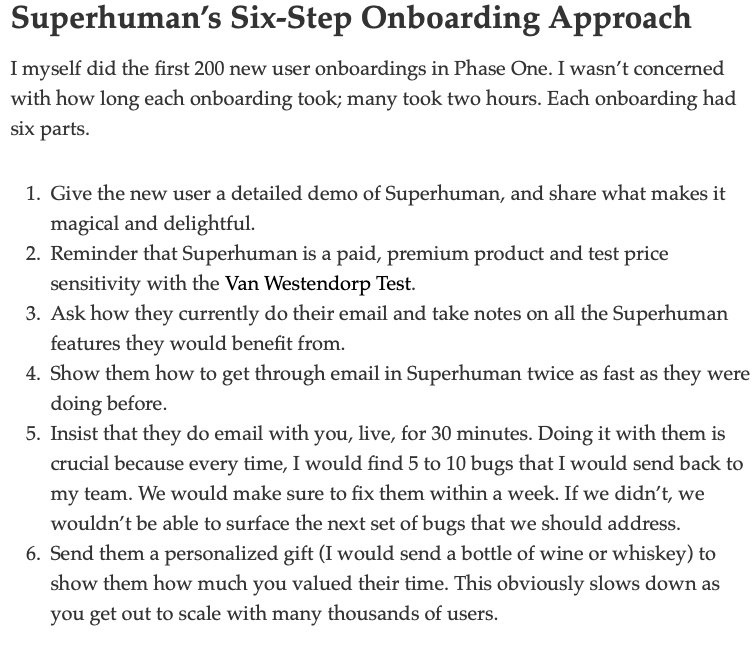Product Experience
Brand & Growth Framework
The Product Experience Brand & Growth Framework helps startups to focus on leveraging the product experience to scale every stage of the customer journey for sustainable growth and brand building.
This article is an excerpt from the Product Experience Marketing page and describes the 5 Stars of the Brand & Growth Framework. Here you can find the complete overview of the framework.
I’ve seen many things in startup marketing that work—or don’t work. One thing I’ve learned is that using the product experience as your North Star—from positioning to onboarding and customer advocacy—helps startups to focus and scale. In this article, I want to show how startups can use the 5 Stars Product Experience Brand and Growth Framework. Don’t miss reading the full story behind Product Experience Marketing Frameworks.
The Five “STARS” of the Product Experience Brand and Growth Framework
With the product experience and customer journey scaling mindset, the three essential marketing areas can be planned and implemented (Market, Brand, Growth). For this purpose, we use a framework with five steps (5 STARS), which are oriented to the product experience and set the focus.
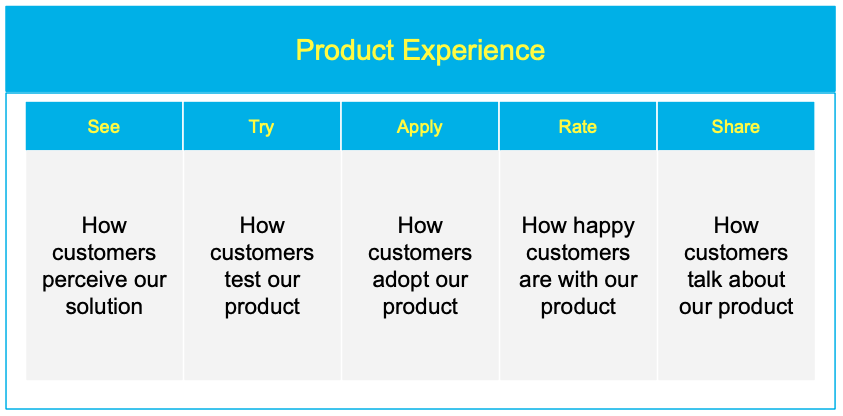
Let’s have a deeper look at each of the 5 elements and understand how we can use it:
See: How customers perceive our solution
How do customers “see” our solution to their problem. The first of the five elements is a bigger block that aims to better connect the narrative and content with the product experience. This starts with a strong focus on our product positioning and messaging—often underestimated, especially by early growth phase startups. Based on the product positioning, the messaging and narrative play an essential role.
The more connected the narrative and brand are to the product experience, the easier is it to build trust and credibility. The key is to avoid building the brand with fluffy marketing claims but use the outcome of the third, fourth, and fifth elements (Apply, Rate, Share).
Keep in mind: marketing is a battle of perceptions, not a battle of products. It’s how customers see our solution that matters, and by focusing on the product experience, we create an advantage that is both believable and exciting. The content that customers are looking for depends on the awareness stage of your users and buyers (The Content-User Fit Model). The focus is on a real product experience, not a product show.
The example for the first element will raise question marks at first sight. Why? Because it is not a startup but almost every startup knows the company: Andreessen Horowitz. Precisely because at first glance there is no typical product and everything is defined by the product experience, I think A16Z is an excellent example of how PFM works.
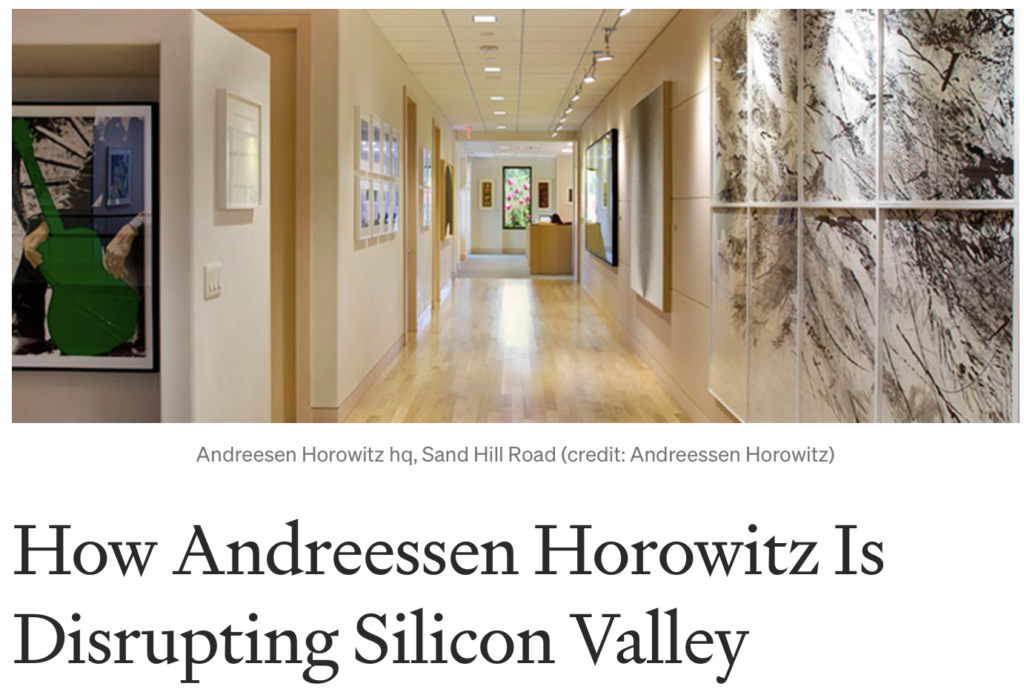
A16Z had a harder time than many startups to be seen in the VC jungle. But the clear focus, the excellent experience, and the clever integration of “product” and marketing have given Andressen Horowitz a clear advantage in perception by positioning their expertise (solution) especially with the help of media (How to build a Media Strategy like Andreessen Horowitz).
A16Z is perceived as a leading VC, a VC that is in the driver’s seat, not a follower. Would you not trust A16Z to be the best solution for your startup? Remember, marketing is a battle of perceptions, not a battle of products. This is why it is very important to focus on the product experience as “proven perception” for your marketing.
Try: How customers test and feel our product
In the second element, we see the possibilities of product demos and product testing, where marketing can support both sales and the product team to further develop the experience from the “see” phase. This phase can be designed differently depending on the model (product-led, sales-led, sales-assisted).
While a trial or freemium model can be used in a product-led/bottom-up approach, a demo plays an important role in sales-led/top-down models. Product-led models have the advantage that customers can quickly test for themselves. On the other hand, sales-led or sales-assisted models offer the opportunity to add a personal touch. The goal is to show the customer a realistic idea of the solution to his problem. Marketing can create a unique experience in the demo call for sales-led products that require pre-qualification.
A good example for a sales-led model is G2 Crowd, a customer review platform for B2B software. G2’s demo calls focus on taking the customer by the hand to show how the platform can be used and what it takes to be successful. Instead of a standardized check, it is about the individual possibilities and many tips. The result is more or less an anticipation of the product itself and much more personalized than the competition.
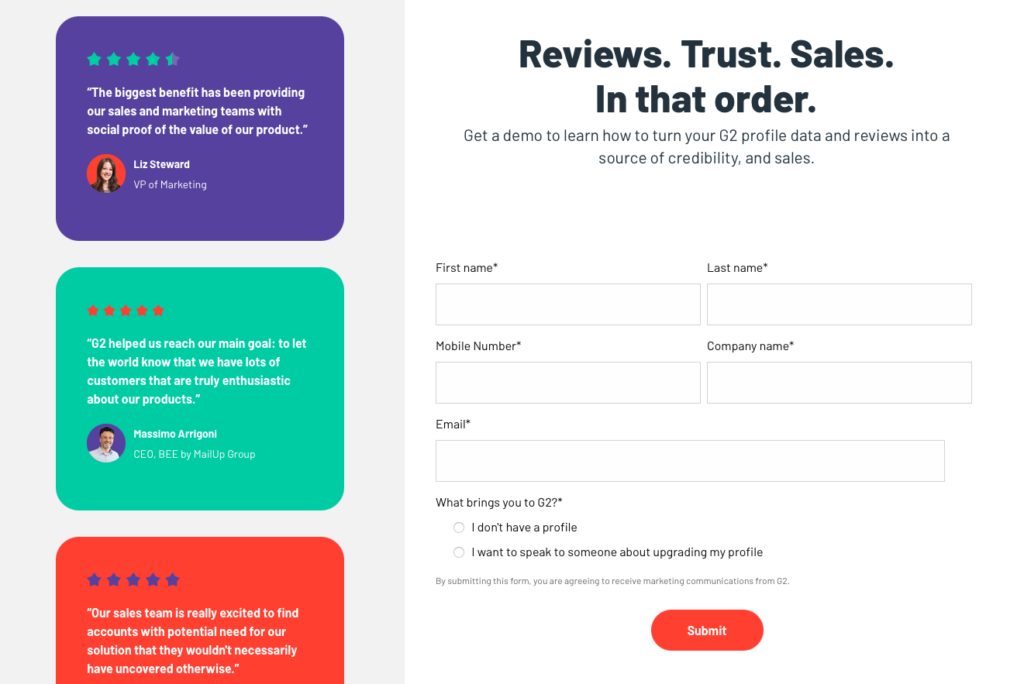
A demo call isn’t something you “must” do, it is a marketing and sales tool to give customers a preview of what will happen when they buy. Product-led models let users try the product without any sales contact. SurveyMoneky has motivational elements for users to test the tool. Besides the free demo account, you can directly find templates and guides for many different topics, which make the start and real testing easier.
Apply: How customers use and adopt our product
In this stage, the lead becomes the customer and the topic of onboarding takes an important place. Hardly any other element offers so much untapped opportunity. Whether personal onboarding or content on-demand, in this phase marketing, product, sales, and customer success have everything in hand to activate the new customer and to use it for the next steps on the marketing side.
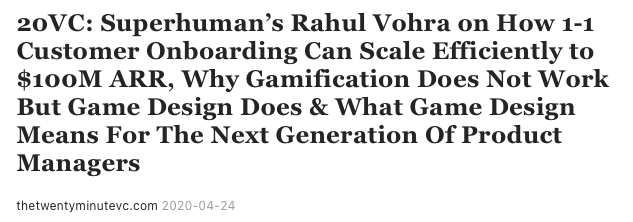
Superhuman might be an extreme example for personalized onboarding but at the same time, it is a great example of how marketing can use onboarding for brand building and growth. This doesn’t seem like the latest invention in the tech world. Nevertheless, Superhuman has managed to create a huge demand with long waiting lists through targeted FOMO activities.
In particular, the personalized onboarding, in which initially Superhuman CEO and Founder Rahul Vohra personally accompanied new users, attracted attention up to TechCrunch reports. Superhuman makes onboarding both a requirement and an experience to ensure that users take advantage of all the features. Many knew about Superhuman because of the product experience around onboarding before they knew exactly what the tool does. Superhuman’s marketing team uses the product-first approach and builds the brand around the experience.
Rate: How happy our customers are with the product experience
The fourth phase is another milestone for the customer relationship. This is where it is decided how satisfied the users are and whether they can be activated permanently. Marketing has the task of supporting both product and customer success in forming the habits of the users in order to ensure permanent use.
After marketing has already analyzed the user in detail in the first element, this experience can help to understand which rewards are needed to change habits (How Habit Loops impact Tech Adoption). Marketing initiatives around the product experience help to increase retention and avoid churn.
Positive user feedback, e.g. from user acceptance testing, is incorporated into product materials and supports branding. At the same time, we can leverage customers in beta groups to provide feedback for positioning, messaging and content. The learnings go back to the market area to sharpen use cases, understand users better and improve the content at the touchpoints.
Share: How customers talk about our product
The fifth element is a source for our brand as well as for growth. We transform customers into fans. From customer testimonials, success stories to event participation, everything is possible. In line with the product-first approach, the focus is on the story around the product experience. Contributions in the media, customer reviews on platforms like G2 or Capterra help our brand to gain credibility and to control our perception.
Customer advocacy and scaling each customer interaction raises our profile. Snowflake is a great example of how to leverage positive feedback and success on the customer side. Whether it’s short video statements from webinars, landing pages with customer successes, or a podcast led by a former journalist.
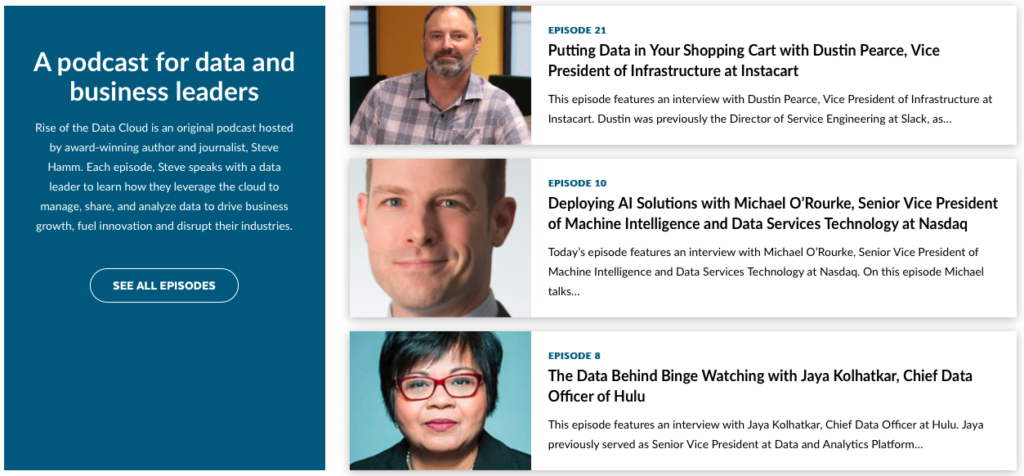
Successful startups using the product experience to reach expedite growth
Product-led growth (PLG) has shown in recent years how important a focus on the product is. While PLG is a go-to-market strategy, the Product Experience Growth framework aims to use the product experience as a business tool for brand and growth as well as to link product, customer success, and marketing more closely. A few examples of hyper-growth startups and unicorns focusing on the product experience:
- Superhuman is one of the best examples showing how onboarding can be used to build a brand in a very short time and generate awareness leading to hyper-growth
- Miro is a virtual whiteboard that allows teams to collaborate more efficiently. Miro’s product grew rapidly because of the product experience and helped to build the brand and growth model.
- Slack is a collaboration tool that is growing faster than Microsoft Teams because of its product-first marketing approaches in which the users feed their growth loops and fuel word-of-mouth.
- Figma is a design tool (meanwhile used by many non-designers) that is only known because of their product experience. Figma’s growth is based on a bottom-up approach and a great product experience which enables their sales teams to win larger enterprise deals.
- Salesforce is probably the oldest example of successful product-first marketing. The “End of Software” strategy was directly connected as a differentiator in the product and built the foundation for the brand.
All of the companies have in common that they build growth and brand around the product experience. The example of Salesforce shows that expanding the brand on a company level works once the growth foundation has been built and resources are available.
Subscribe to my newsletter and follow me on LinkedIn and Twitter.
Dirk Schart is CMO of the No. 1 Enterprise AR startup RE’FLEKT. He is a Product-first Marketing pioneer and focuses on B2B software and SaaS models —from zero to hero. Dirk is the former Director of SaaS Products at HyperloopTT, and helped scale SkyWork from 30 to 200+ in less than 18 months. He mentors startups at the German Accelerator in the Silicon Valley. Dirk is the author of “Augmented and Mixed Reality for Marketing”.

